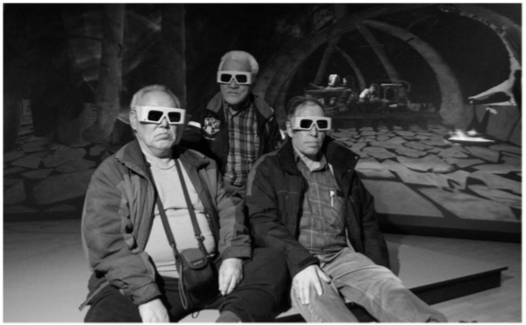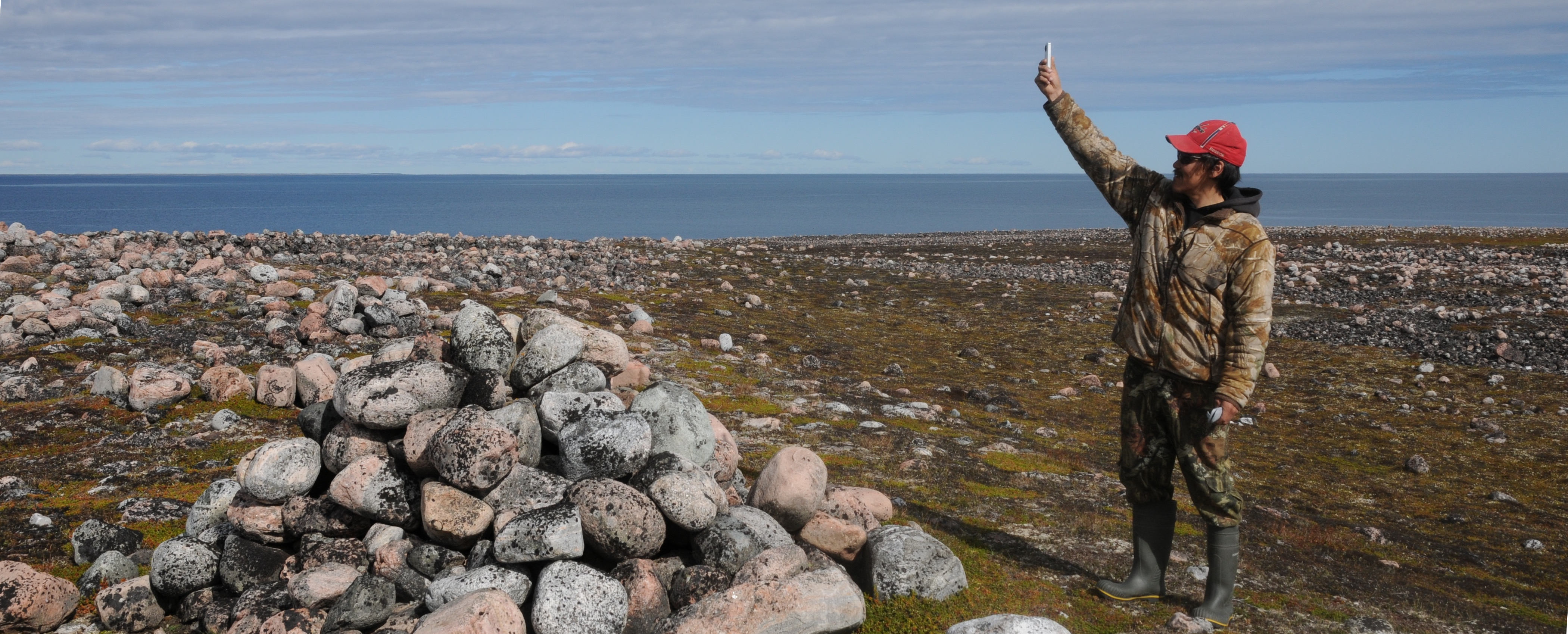Overcoming Remoteness
Many people are familiar with panoramic photospheres (a panoramic photo that is either stitched together from multiple images, or taken with a specialized camera such that the photo can be projected onto the inside of a sphere), which allow Internet users to virtually experience a variety of natural and urban landscapes. These interactive panoramas (ex. Google Streetview) are extremely popular because they allow people to visit locations that are often far removed from where the user is situated, many of which may be places where a user is unlikely ever to visit. From a heritage perspective, these immersive panoramas offer an opportunity, as it is often thought that to truly understand the significance of a heritage site a visitor must experience it first-hand - that walking along the physical site is critical to understanding the key messages of meaning and significance of a site.
There are heritage sites of great significance throughout the Canadian Arctic. However, many are very remote, and therefore challenging to visit. Due to this isolation, polar heritage remains largely removed from the public eye. Compounding the effects of remoteness is that historically much of the Canadian focus on Arctic heritage has been centred around the achievements of European explorers (think of the attention given to finding the Franklin ships). Even though the Canadian Arctic also contains many Inuit sites of national significance, these sites have received far less attention.
By building a virtual tour of the Arvia’juaq National Historic Site this project’s goal is to tap into the possibilities that digital technologies hold for reaching geographically distant people who otherwise could not visit the site, and to use the increased sense of ‘being there’ to help people understand the importance of this National Historic Site.
The virtual tour of Arvia’juaq National Historic site will be significant not only to the broader Canadian public, but to the community of Arviat as well. Applications for this tour include education, polar tourism, support for polar preservation, the revitalization of indigenous cultures, and the ability for the Inuit to tell their own story to the public. Furthermore, this project serves as a ‘proof of concept’ for other historic sites which may be looking for effective ways to overcome the barriers of accessibility and remoteness.
a virtual 3D Thule whalebone house at the University of Calgary.
From left: Louis Angalik, Mark Kalluak and Donald Uluadluak.
Photo courtesey of Dr. Peter Dawson

- Dawson, Peter, Richard Levy, and Natasha Lyons
2011 'Breaking the fourth wall': 3D virtual worlds as tools for knowledge repatriation in archaeology. Journal of Social Archaeology 11(3):387-402. - Flynn, Bernadette
2007 The Morphology of Space in Virtual Heritage In Theorizing Digital Cultural Heritage : A Critical Discourse. F. Cameron and S. Kenderdine, eds. Cambridge, MA, USA: MIT Press. - Sylaiou, Stella, et al.
2010 Exploring the relationship between presence and enjoyment in a virtual museum. International Journal of Human-Computer Studies 68(5):243-253. - Witcomb, Andrea
2007 The Materiality of Virtual Technhologies: A New Aproach to Thinking about the Imact of Multimedia in Museums. In Theorizing Digital Cultural Heritage: A Critical Discourse. F. Cameron and S. Kenderdine, eds. Cambridge, MA: MIT Press.
